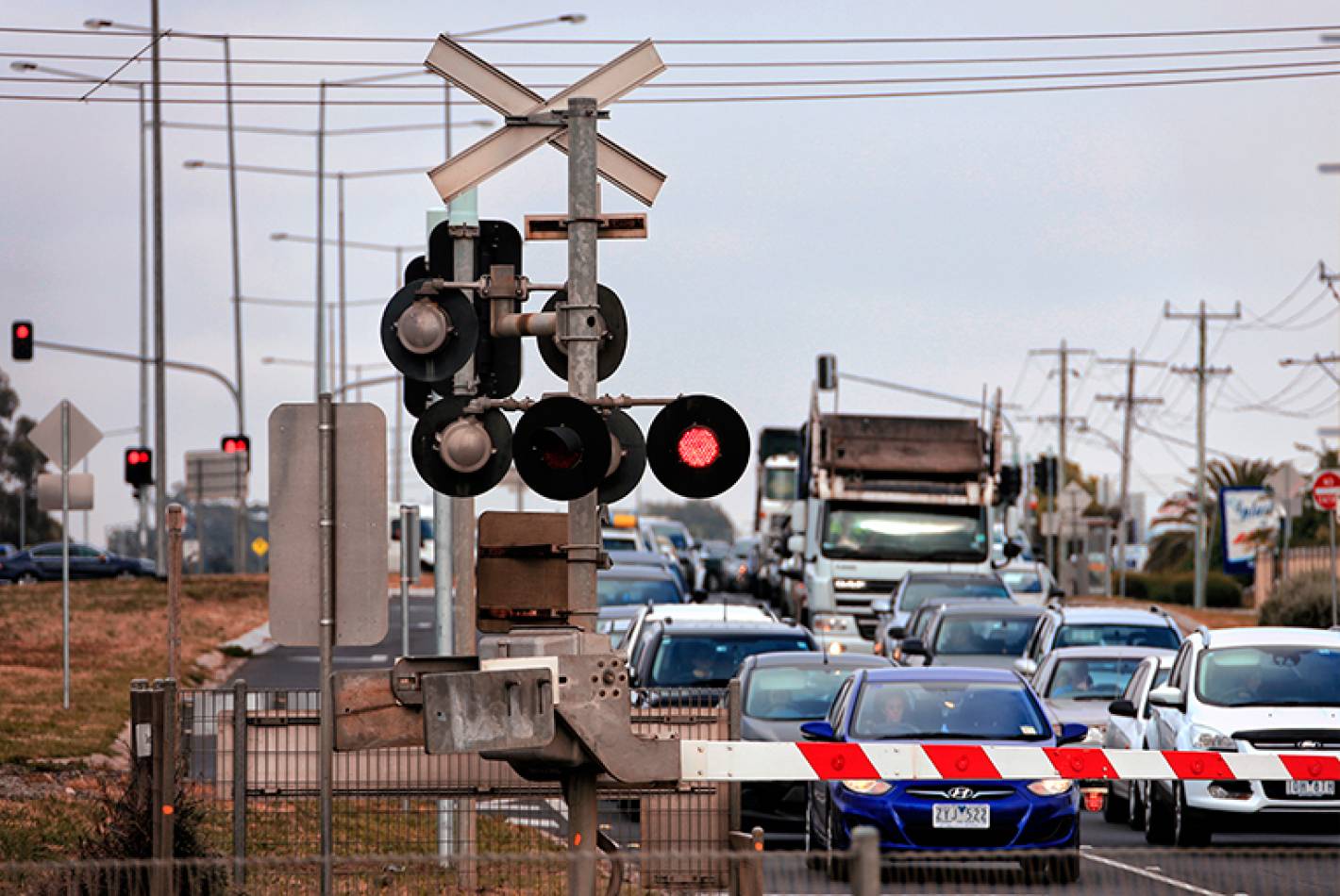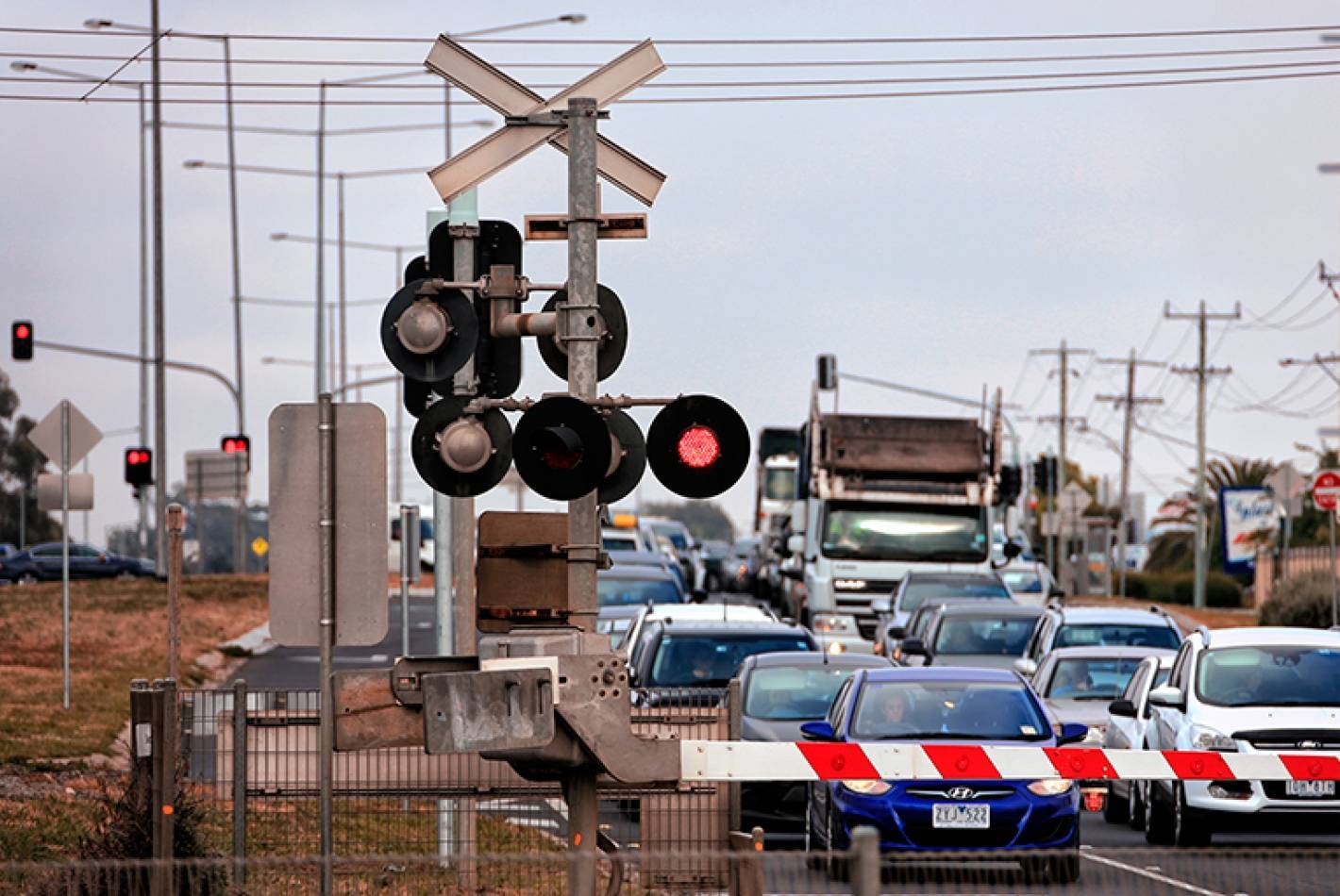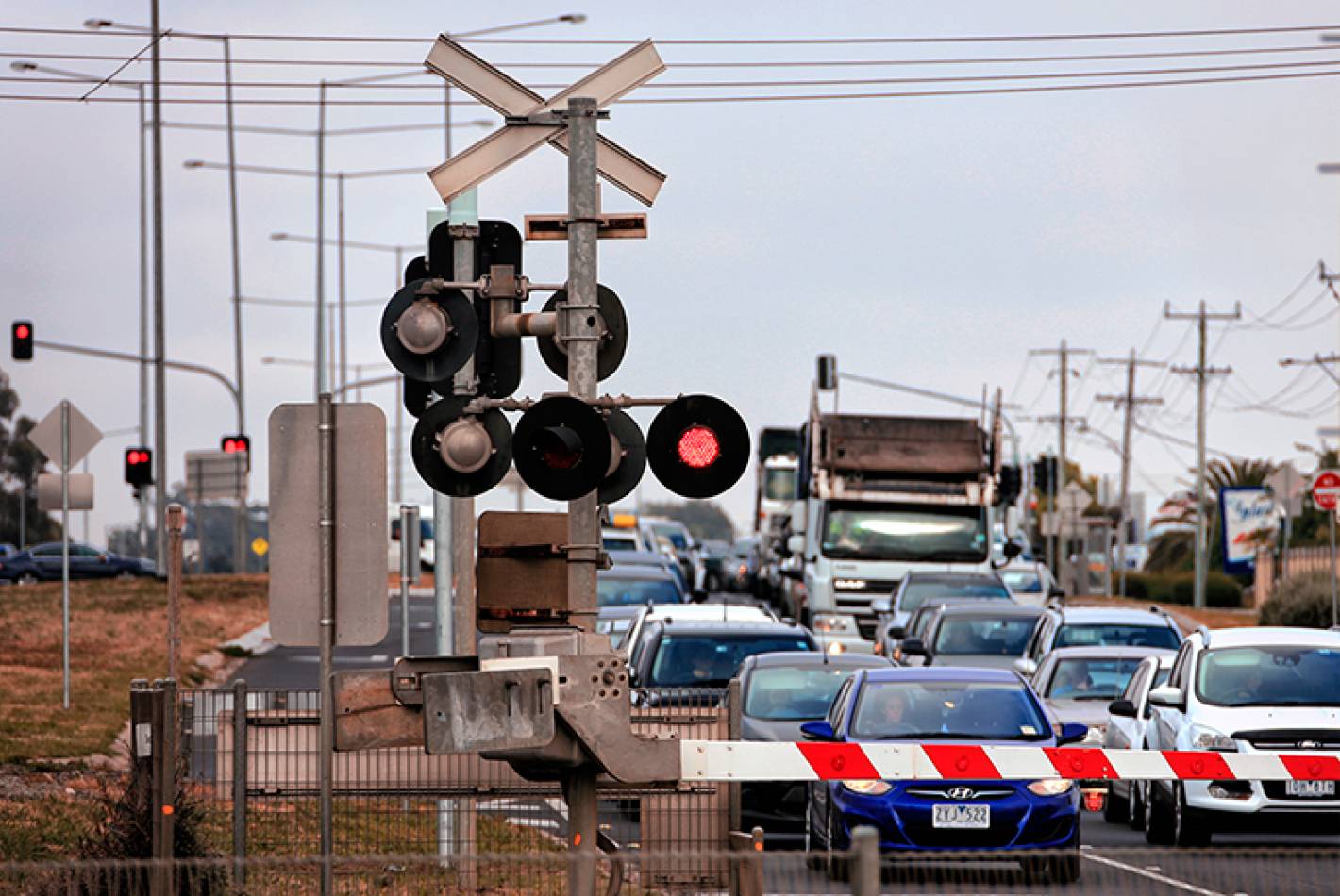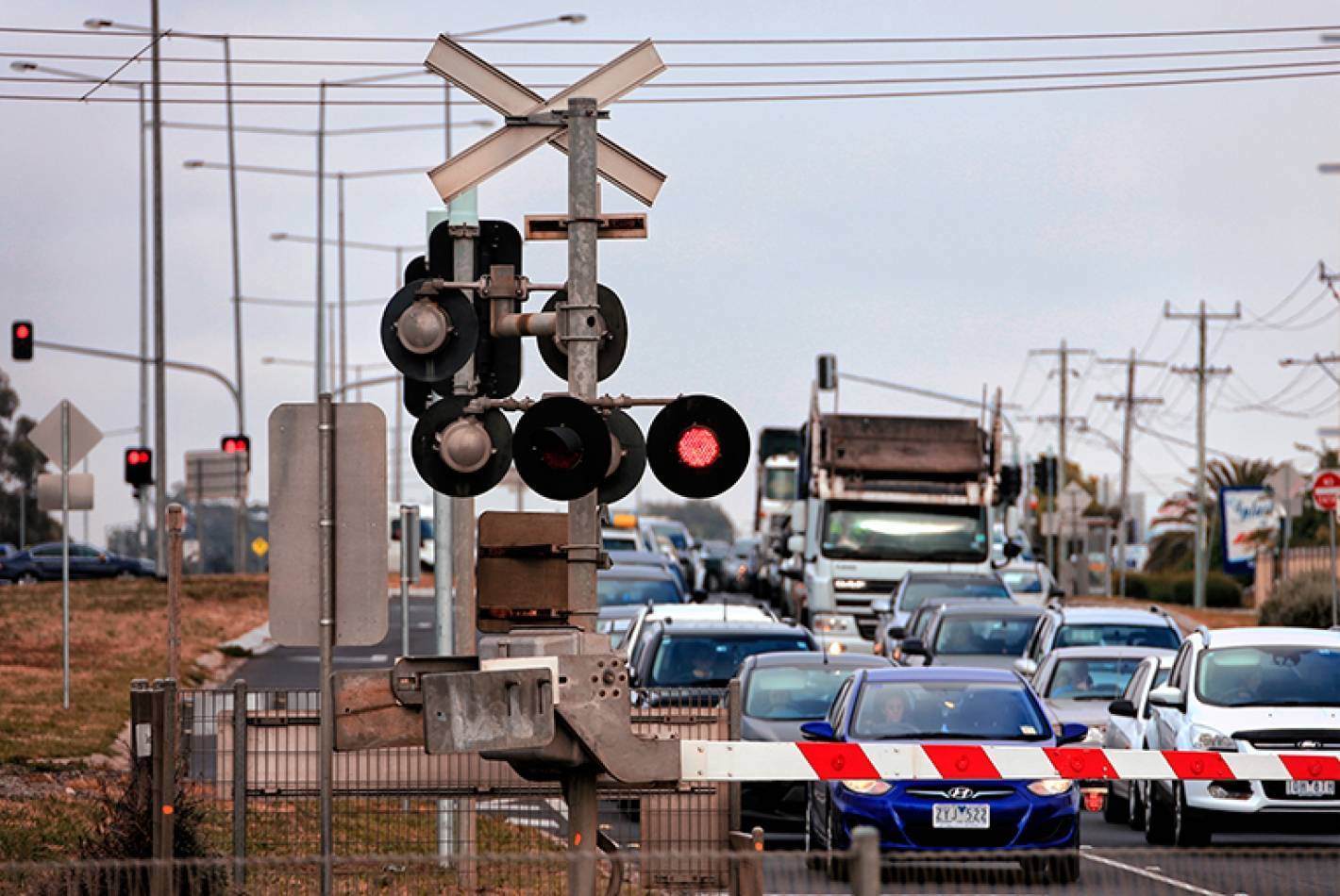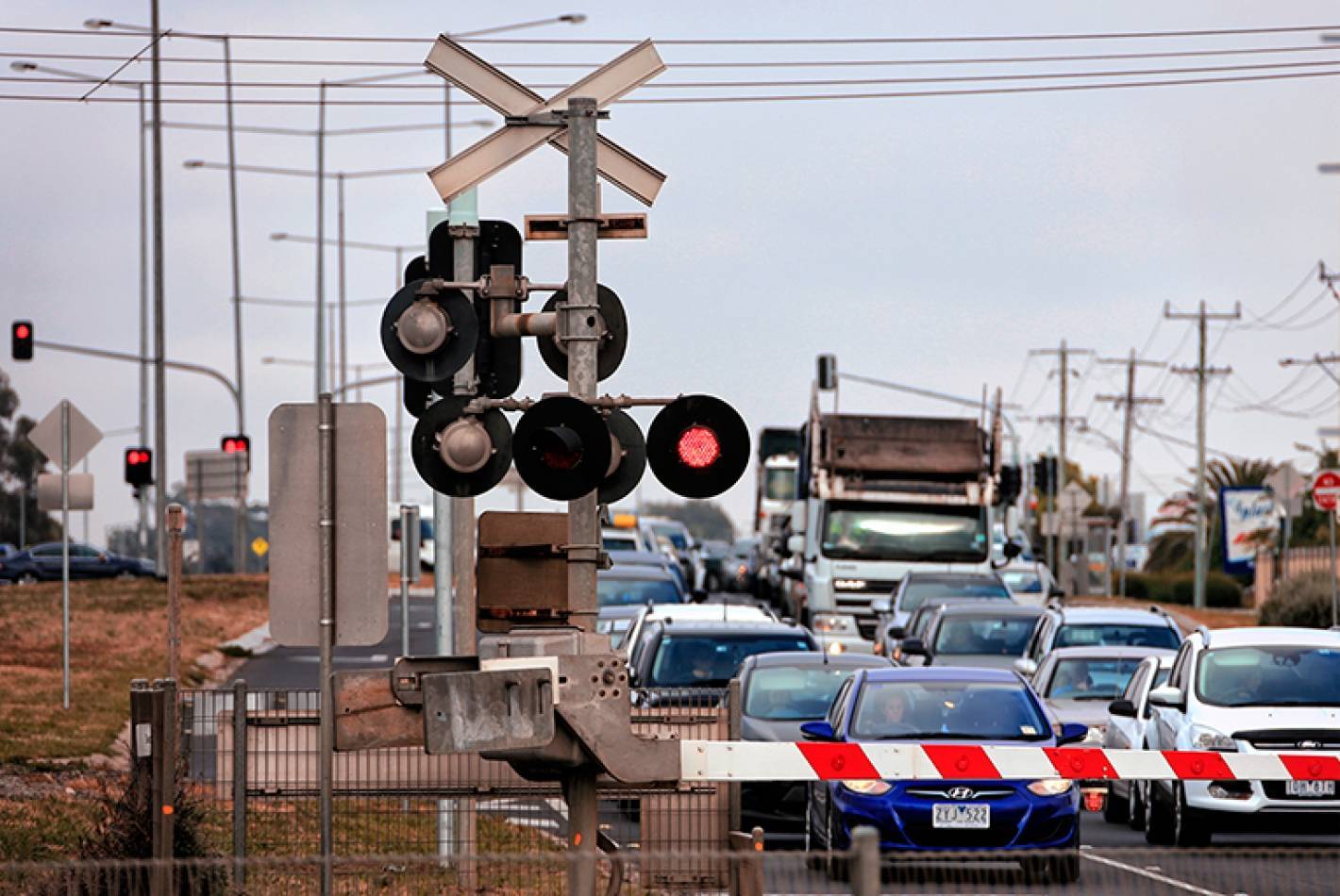The Level Crossing Removal Project (LXRP) involves the removal of 85 level crossings across metropolitan Melbourne by 2025. In addition, the program involves other rail network upgrades such as new train stations, track duplications and train stabling yards.
The project is being overseen by Victoria’s Major Transport Infrastructure Authority (MTIA).
Initially, four packages of level crossings, and two standalone projects were awarded under the program.
Package One, worth $524 million, included:
- Burke Road, Glen Iris
- Centre Road, Bentleigh
- McKinnon Road, McKinnon, and
- North Road, Ormond.
Package Two, worth $482 million, included:
- Blackburn Road, Blackburn
- Furlong Road, St Albans
- Heatherdale Road, Mitcham, and
- Main Road, St Albans.
Package Three, worth $1.6 billion, and also referred to as the Caulfield to Dandenong package, included:
- Chandler Road, Noble Park
- Clayton Road, Clayton
- Centre Road, Clayton
- Corrigan Road, Noble Park
- Grange Road, Carnegie
- Heatherton Road, Noble Park
- Koornang Road, Carnegie
- Murrumbeena Road, Murrumbeena, and
- Poath Road, Hughesdale.
The Caulfield to Dandenong package also included five new stations, and signalling and power upgrades.
Package Four, worth $177 million, included:
- Mountain Highway, Bayswater, and
- Scoresby Road, Bayswater.
The two standalone projects were:
- Melton Highway, Sydenham, and
- Thompsons Road, Lyndhurst.
Since above packages and standalone projects were awarded, the MTIA established the following four ongoing program alliances to deliver the remaining work packages within the program:
- North Eastern Program Alliance (NEPA)
- North Western Program Alliance (NWPA)
- Southern Program Alliance (SPA), and
- Western Program Alliance (WPA).
The North Eastern Program Alliance (NEPA) split into NEPA Rail and NEPA Road in 2018. These two entities have since changed their names to South Eastern Program Alliance (SEPA) and Metropolitan Roads Project Alliance (MRPA) respectively. However, these two alliances remain a single legal entity under its original alliance (NEPA).
MTIA has allocated all level crossing removal sites, and incorporated rail upgrades to one of the above four program alliances, with formal contract awards occurring incrementally, subject to ongoing performance and provision of detailed works proposals and costings. For details on allocated projects under each alliance, and the awarded contracts, please refer to alliance contract pages.
Funding contributions
| Victorian Government |
Procurement
| Procuring Agency: | Major Transport Infrastructure Authority (MTIA), Victoria |
| Related contracts: |
PROJECT HISTORY
| 2014 | The newly-elected Victorian Government announced it will pursue the pre-election commitment to remove 50 of Melbourne’s most dangerous and congested level crossings (LXRP1) by 2022. |
| 2015 | The Victorian Government established the Level Crossing Removal Authority (LXRA), which was an administrative office within the then Department of Economic Development, Jobs, Transport and Resources (DEDJTR). |
| May 2015 | The Victorian government awarded the Package One contract to an alliance comprising John Holland and Kellogg Brown & Root (KBR). |
| Sep 2015 | The Victorian government awarded the Package Two contract to an alliance comprising Leighton Contractors, Aurecon and Hyder Consulting. |
| Nov 2015 | The Victorian government awarded the Package Four contract to an alliance comprising Metro Trains Melbourne, Laing O'Rourke, Fulton Hogan, and AECOM. |
| Apr 2016 | The Victorian government awarded the Package Three contract to an alliance comprising Lendlease, CPB Contractors, WSP Parsons Brinckerhoff, Aurecon and Metro Trains Melbourne. |
| 2017 | Following a competitive tender process, four program alliances were established to deliver the remaining work within the program. The alliances were, North Eastern Program Alliance (NEPA), North Western Program Alliance (NWPA), Southern Program Alliance (SPA), and Western Program Alliance (WPA). |
| 2018 | North Eastern Program Alliance (NEPA) split into NEPA Rail and NEPA Road to maximise the expertise of its construction partners. However, these two alliances remained a single legal entity under its original alliance (NEPA). |
| Oct 2018 | The Victorian Government announced that it would remove a further 25 level crossings (LXRP2) as part of the program. |
| Jan 2019 | The Victorian Government abolished DEDJTR, replacing its previous transport functions with the Department of Transport (DoT). The Victorian Government also abolished LXRA, replacing it with the newly-formed Major Transport Infrastructure Authority (MTIA), as an administrative office within DoT. |
| Feb 2019 | MTIA allocated all remaining level crossing removal sites (under LXRP1 and LXRP2) to one of the four established program alliances. However, the program alliances were still required to provide a detailed works proposal and costings before they are awarded a construction contract for a package of sites. |
| 2019 | NEPA Rail and NEPA Road changed their names to the South Eastern Program Alliance (SEPA) and the Metropolitan Roads Project Alliance (MRPA) respectively. |
| Jul 2021 | The Victorian Government announced that it would remove a further 10 level crossings as part of the program. |
| Sep 2021 | The Victorian Government awarded the Gap Road level crossing removal in Sunbury to the Rail Infrastructure Alliance (RIA), comprising John Holland, CPB Contractors, AECOM and Metro Trains Melbourne. The RIA is also delivering major works on the Metro Tunnel Project at the eastern and western tunnel entrances, and the Sunbury Line Upgrade. |
| May 2022 | The 2022-23 Victorian Budget allocated $2.6 billion in capital spending for FY2022-23. |
| Sep 2022 | The Victorian Government announced a further eight level crossings will be removed in Brunswick and Parkville on the Upfield Line by 2027 - in the North Western Program Alliance's region. It is expected that an elevated rail bridge will be constructed in each of these locations. |
| May 2025 | The 2025-26 Victorian Budget allocated $1.5 billion in FY2025-26 to the project. |

